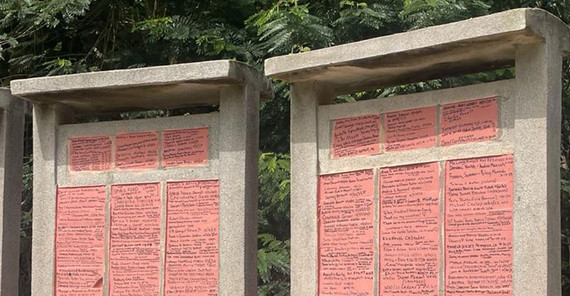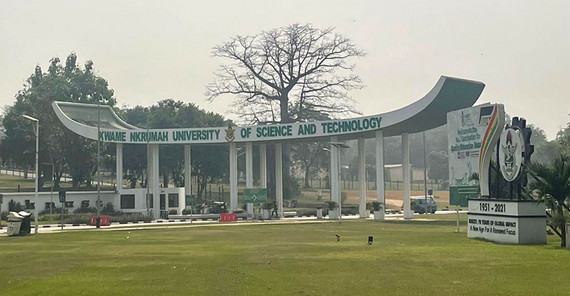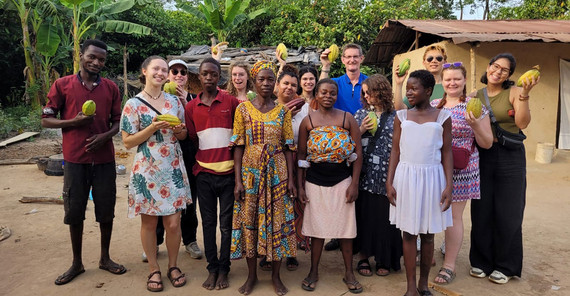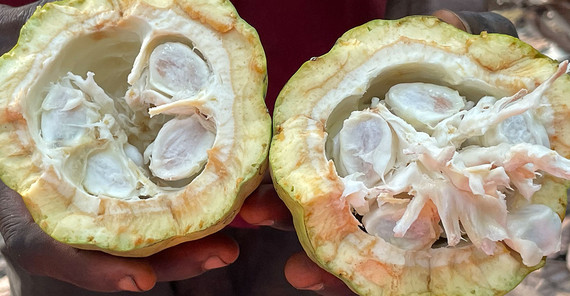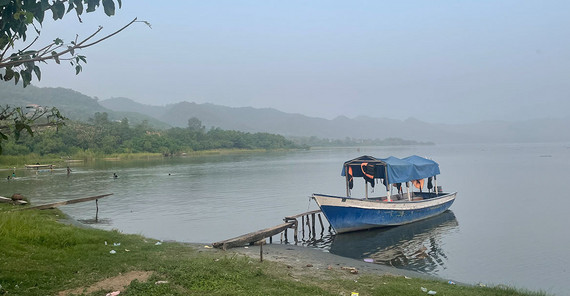Day 10: Drive to Kumasi and visit to the Ancestral Slave River Site in Assin Manso
After another five eventful days, we leave our accommodation in Ankwanda and look forward to the upcoming program in Kumasi, the capital of the Ashanti region and now the largest city in Ghana.
On the four-hour drive to our next destination, we make an intermediate stop at the historically significant Assin Manso Ancestral Slave River Site. During the transatlantic slave trade, one of the largest of the 63 slave markets in Ghana was operated here. After hundreds of miles of forced marches from the interior of the country to the coastal region, the captured Africans had to undergo further inhumane practices at this site: Depending on their physical condition, those who still appeared to have half their strength were "sorted out" for the final march to Cape Coast Castle as well as Elmina Castle. They were then branded in a painful process, shaved with shards and given their "last bath" in the Ndonkosuo River, also known as the slave river, which runs directly adjacent to the site. All those slaves who were not selected by the slave drivers in the sorting faced a gruesome and inevitable fate: These people were tied to trees and left behind, where they prey victim to animals and the scorching heat.
"Now, I ask you to take off your shoes and walk down to the river as have done thousands of our ancestors. It is here where their journey into uncertainty started". Our guide asks us to take off our shoes as a sign of respect for all the people who began their "journey into uncertainty" at the Assin Manso river and beckons to walk down to the site of the last bath together. In an ambience of oppressive silence, we walk to the bank of the river. On the left, we see a white archway that marks the entrance to the "last bath" and leads to the Ndonkosuo stream. On the right is another archway but with the inscription "First Bath of Return" and steps leading down to the moving river. This place is intended to enable people from the African diaspora to experience a spiritual homecoming and pay tribute to their ancestors.
Out of respect and reverence, we keep our distance from a ceremony that is currently taking place and return to the main area. Here we find the Memorial Wall of Return, a second place that allows people from the African diaspora to write their names on a large clay wall and thus to symbolize the reconnection with their ancestors. Deeply moved and thoughtful we then set off on the second stage of our journey to Kumasi.
After another three hours' drive, we arrive at the campus of the Kwame Nkrumah University of Science and Technology (KNUST) and check into our rooms at the IPO-Singh Guesthouse. A little later, we meet our host Professor Charles Ofosu Marfo – Provost of the College of Humanities and Social Sciences since 2020 – and talk about our experiences on the trip so far.
Day 11: Ghanaian cuisine and an excursion to Bosomtwe Lake
After breakfast on campus, we have some time to explore the extensive campus area and get prepared for the upcoming (culinary) excursion. We meet up again with Charles and some of his friends in a restaurant centrally located in Kumasi and have the opportunity for further exchanges while trying and enjoying typical Ghanaian cassava fish soup, fufu and spicy jollof rice. Charlotte, who worked for Charles as a former student assistant and now teaches at an elementary school in Kumasi, also accompanies us on today's excursion. We quickly get talking about the Ghanaian and German school systems and the opportunities for international teacher exchanges. As Charlotte is interested in German and we in turn are interested in Twi which is widely taught in Ghanaian schools, we teach each other a few first words in the respective language and compare their sound and writing systems.
In the light of the already setting sun, we then drive in the to the Bosomtwe community. After a very bumpy journey, we are first rewarded with a visit to a family-run cocoa farm and the chance to meet the family members. After walking a few meters through the dense greenery of the cocoa trees, we can already see the first greenish-yellow fruits. A family member shows us how cocoa pods are opened and lets us taste the inside of the pod. We are surprised by the milky-white layer that covers the cocoa beans and their fruity-sweet taste. Before we continue our journey, we say a heartfelt goodbye to the farm owners, have a photo of the whole group taken and even receive a cocoa fruit as a gift.
The last stop on our excursion is the circular Bosomtwe Lake, which lies in a meteorite crater and is surrounded by dense forests. As we get off the bus, children run up to us asking for school books and money for food. Stuffed banana leaves are sold on the shore and there is a smell of smoked fish.
We make our way back to the university campus in the sunset along more bumpy and dusty red roads.
To the travel diaries published so far (in German): https://www.uni-potsdam.de/de/up-entdecken/upaktuell/up-unterwegs-reisetagebuecher

